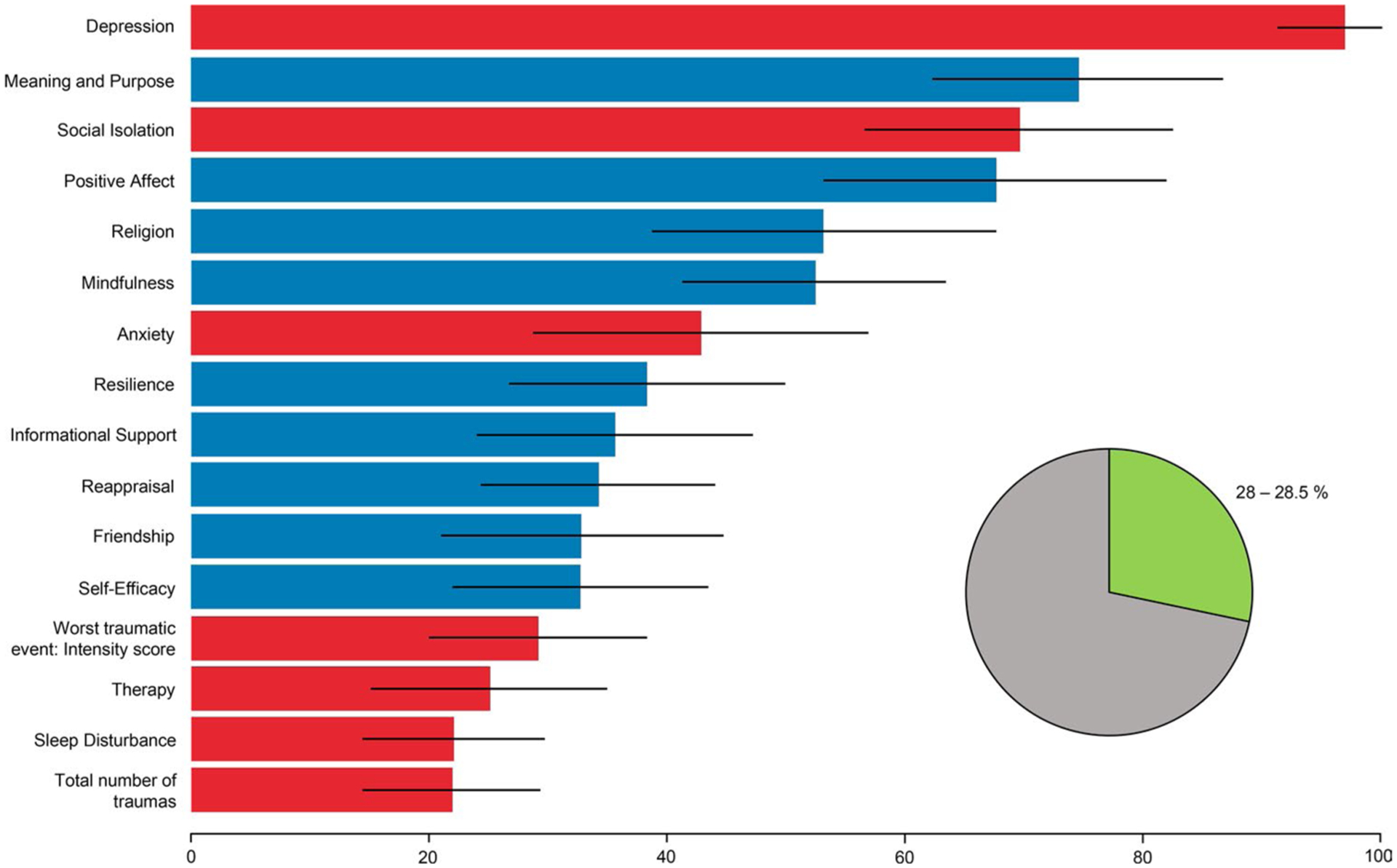Figure 1.

Variable importance (VI) for models predicting suicidal thoughts and behaviors (STBs) in first year college students. The accompanying pie chart depicts percent of variance explained by the model and its 95% confidence interval. VI is based on the stacked ensemble. Variables with bars in red or blue have a positive or negative univariate correlation with suicidality, respectively. Error bars represent the 95% confidence interval, taken across partitions.
Abbreviations: Demographic variables: gender, religion, and participation in therapy in past three months; PROMIS Anxiety, Depression, Emotional Support, Informational Support, Sleep Disturbance, and Social Isolation scales; NIH Toolbox Friendship, Positive Affect, Meaning and Purpose, and Self-Efficacy scales; Freiburg Mindfulness Inventory (FMI); Emotion Regulation Questionnaire (ERQ): Reappraisal and Suppression scores; Connor-Davidson Resilience Scale (CDRISC-10); Suicidal Behaviors Questionnaire-Revised (SBQ-R); Vrana-Lauterbach Traumatic Events Scale (TES): total number of traumas and intensity score.
